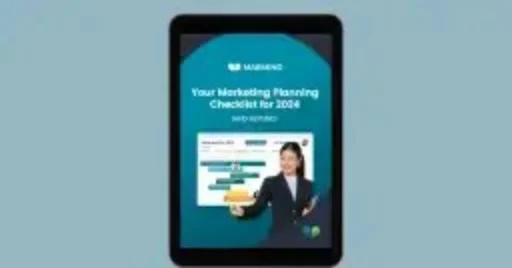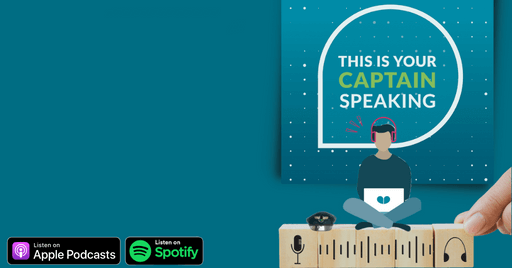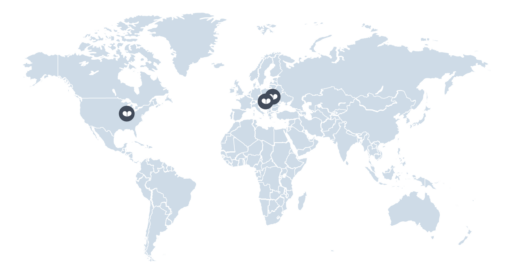Agile is the name of the marketing game for many – including huge brands and startups alike. Ever caught yourself wondering how they actually pull it off?
Today, we’re going behind the scenes to reveal the basics of agile marketing through real stories from various industries. Spoiler: you’re very familiar with these brands!
Let’s discover how staying agile makes all the difference.
#1 Spotify's Data-Driven Personalization
Spotify’s approach to personalization is deeply rooted in its use of big data, machine learning, but also artificial intelligence.
What exactly is Spotify doing here?
The platform diligently analyzes user interactions, such as:
- play counts,
- skips,
- searches,
alongside audio analysis of songs to understand music at a granular level. Such a dual analysis allows Spotify to not only recommend songs that a user might like – but also to discover patterns and preferences that are not immediately obvious.
For example, “Discover Weekly” is a playlist that combines user behavior data with complex algorithms to recommend music each user is likely to enjoy, effectively mimicking their choices. This playlist is updated weekly and is based on the user’s listening habits, customized for every single Spotify user.

What’s agile about it?
Spotify’s system is designed for continuous learning, making each interaction more accurate and tailored. An agile, data-driven engagement strategy is showcased here as a sign of the company’s commitment to user engagement. They know exactly that to stay fresh and relevant, they need to focus on adapting to new music releases and evolving user tastes with remarkable speed.
#2 Amazon’s Dynamic Pricing Approach
Amazon uses a dynamic pricing algorithm to monitor and adjust the price of millions of products in real time. Various factors are considered in this strategy, including product demand, competitor pricing, stock levels, and even the time of day.
Amazon can set prices that are both competitive and profitable – all by analyzing these data points. Based on these fluctuating variables, the price of a product their clients view in the morning might differ from the price of the same product in the evening.
For example, if a particular book becomes a bestseller or a specific electronic gadget is in high demand, Amazon’s pricing algorithm may automatically increase the price to match that demand.
Conversely, if a new model is released, prices for older models might drop. This dynamic approach allows Amazon to optimize sales and profits by adjusting to market conditions without any delay.
This way, Amazon can offer good deals but still make money. The system gets better over time, learning how to set the best prices.
What’s agile about it? Amazon’s pricing system is a model of agility, as it can make thousands of price changes in just a few minutes. Such rapid responsiveness, a hallmark of Agile, ensures that Amazon’s offerings are always competitively priced, attracting customers and maximizing sales opportunities. The system’s design for continuous adaptation means it constantly learns and evolves, and, in turn, it becomes more efficient at predicting and responding to market trends.
#3 Airbnb’s Agile Response to the Pandemic
During the pandemic, Airbnb quickly shifted its focus towards promoting local stays and experiences as international travel plummeted.
As a result of this pivot, the company was able to stay relevant and cater to changing consumer behavior – all while keeping the profits.
As the pandemic severely restricted international travel, Airbnb recognized the need to adapt its business model to the new reality swiftly. The company changed its focus from global travel accommodations to promoting local stays and experiences. This included more flexible search options and enhanced cleaning protocols to address health and safety concerns, so that local travel was made more appealing and accessible.
Such a strategic pivot catered to the rising interest in so-called “staycations,” where people were looking for vacation experiences close to home due to travel restrictions and safety concerns. As a result of adjusting its offers and marketing strategies, Airbnb was able to tap into a new customer base and continue providing value to both hosts and guests during a challenging time.
What’s agile about it? Airbnb’s quick response to the pandemic showcased its agility and resilience. The travel industry was one of the most affected by the pandemic. It could have been easier for Airbnb to simply give up and shut down operations until the pandemic is resolved. But they didn’t give up – and agile approaches played a considerable role here.
Despite the pandemic, Airbnb remained relevant by reevaluating its market strategy and reallocating resources to focus on local travel experiences. The flexibility and innovation of this business approach underscores the company’s innovative approach.

eBook
Creating a marketing campaign takes a bit more than just some creative flair and a catchy slogan.
This eBook aims to guide you through the 9 most crucial metrics that every marketer should track to measure success effectively.
By the end of this guide, you’ll not only understand the importance of each metric but also know how to leverage them to fine-tune your marketing campaigns for optimal results.
#4 Coca-Cola's 'Share a Coke' Campaign
Coca-Cola’s decision to replace its iconic logo with popular names on bottles was a bold move that paid off. But agile is all about bold, dynamic moves.
This campaign was agile in its execution, allowing for quick adaptation to different markets and personalization at scale.
Coca-Cola swapped its famous logo for popular names on bottles, personalizing the drinking experience. It turned ordinary beverage bottles into unique, shareable items.
The whole thing originated in Australia, for a quite interesting reason. In August 2011, 50% of teens and young adults in Australia had yet to taste Coke. On its bottles, Coca-Cola printed 150 of the most popular Australian names to reconnect with this group. The campaign aimed to create a more intimate connection with consumers, and encouraged them to find bottles with their names or those of friends and family.
For example, the campaign expanded to include not just names but also terms of endearment, nicknames, and even holiday themes, depending on the market.

This allowed Coca-Cola to connect with a wider audience, making the campaign relevant across different cultures and occasions.
What’s agile about it?
Its rapid rollout across various markets. Coca-Cola quickly adapted the concept to local nuances. As a result of this flexibility, the brand was able to engage consumers globally – while still maintaining a personal touch.
#5 Lego's Fan-Driven Product Development
Lego Ideas is a crowdsourcing platform where fans submit set ideas. Other users vote on these ideas, and sets reaching a specific vote threshold are reviewed by Lego for potential production.

As a result of this approach, Lego aligns product development with its fan base’s passion and creativity. They basically check what their audience wants to see developed and pay for once it’s available.
For example, successful Lego Ideas projects have ranged from fan-favorite TV shows and movies to original concepts that capture the imagination of the Lego community. These sets often become highly sought after, showcasing the power of fan involvement in product selection.
What’s agile about it?
This strategy is agile in its ability to quickly gauge consumer interest and bring popular ideas to market. With community feedback, Lego is able to better predict which products will be successful, reducing the risk associated with product development.
It’s not just Lego that receives feedback, but it also acts on it – the winning projects are actually put into motion and released to the public.
The new products are in line with consumer interests, at all times. Lego receives ideas that they can act on fairly quickly, and the community feels included in their strategy.
#6 Dove's Real Beauty Campaign
Dove’s Real Beauty campaign focuses on featuring women of all shapes, sizes, and ethnicities. In order to stay relevant and resonate with its audience, Dove taps into the conversation about body positivity and self-esteem.
This campaign has been breaking from traditional beauty ads by showcasing women – as they are. This initiative celebrates diversity and promotes body positivity, challenging industry norms and encouraging a broader conversation about beauty standards.

For example, the campaign includes real-life stories, unedited photos, and videos that highlight natural beauty, aiming to boost self-esteem among women worldwide. It does this to position itself as a brand that understands and advocates for the values of its audience as well as to advertise its products.
What’s agile about it?
Dove’s agility is evident in its responsive brand messaging. As a result of engaging with current social movements and consumer sentiment around body positivity, they remain relevant and deepen their connection with the audience. Dove can continuously adapt its messaging to reflect evolving discussions on beauty and confidence.
Over to You
Exploring agile marketing through brands like Spotify, Amazon, and Airbnb shows us the power of quick adaptation.
These stories inspire us to think differently about our own marketing strategies.
How will your brand use agility to keep up with changing market demands?
Let’s take these examples as a starting point for innovation, making sure our strategies are as dynamic as the world we live in.
Remember, staying still isn’t an option in marketing.










